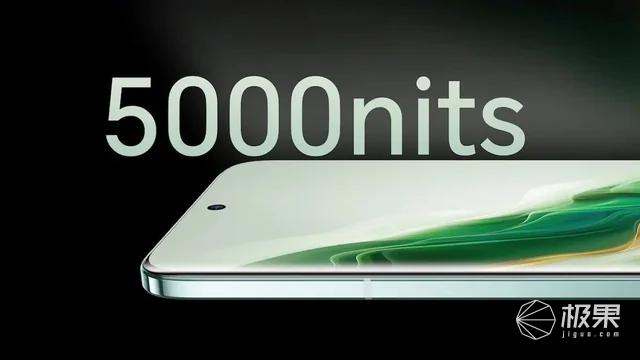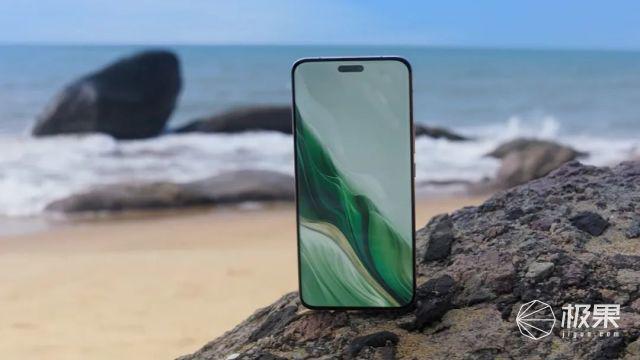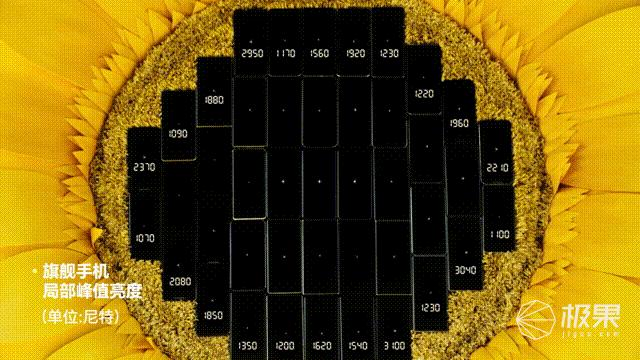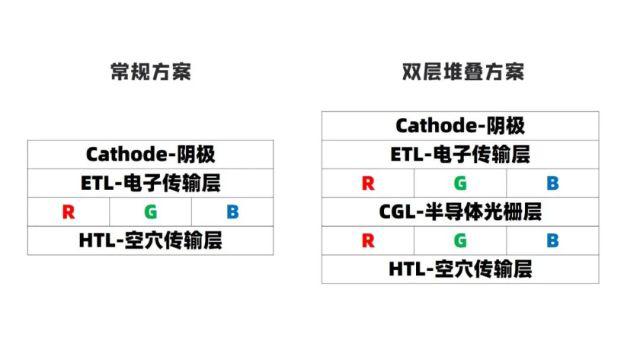 Hardware Tutorial
Hardware Tutorial
 Hardware Review
Hardware Review
 No need to frantically pull the brightness bar outdoors? This wave of mobile phone tests will help you get the king of domestic screen brightness
No need to frantically pull the brightness bar outdoors? This wave of mobile phone tests will help you get the king of domestic screen brightness
No need to frantically pull the brightness bar outdoors? This wave of mobile phone tests will help you get the king of domestic screen brightness

How bright can the flagship phone in 2024 be?
How much change can the peak brightness be brought to 5000nits for "outdoor use" and "daily viewing"?
This issue of Jiguo Creative Column will give you a glimpse of the answer through the brightness performance of 43 flagship mobile phones on the beach in Sanya, and see how it enters the "post-OLED era" under strong outdoor sunlight. How flashy can a mobile phone screen be?

Since the second half of last year, several domestic manufacturers such as Honor, OnePlus, and Xiaomi have started a brightness relay race on their flagship models. The peak brightness of mobile phone screens It has been soaring all the way, from the cap of 3000 nits to 5000 nits.

But, what is the use of this to us?
To get the answer to this question, we must first clarify the brightness of the mobile phone, from 0 to the so-called peak brightness advertised, and what scenes it is intended for.
First of all, the phone itself will have a brightness bar that can be manually adjusted. This brightness is currently generally between 200-700 nits. In most scenes, this brightness range is enough for us to comfortably read the screen content.

#The maximum value of this brightness is what we call "manual maximum brightness".
On top of the manual maximum brightness, the phone also has "sunlight-induced brightness". This part of the brightness is usually automatically released when we use the phone outdoors to ensure that we can also see the brightness under strong sunlight. Read the words on the screen clearly.

The brightness we mentioned above are all global brightness, which is for the entire mobile phone screen. It affects whether you can read the screen comfortably.
The peak brightness we mentioned at the beginning is actually local brightness, targeting a small part of the screen. Because only a small part needs to be lit, its brightness will be higher than "manual maximum brightness" and "global maximum brightness" are higher. It is suitable for scenes where only a small area is particularly bright and the remaining large screen brightness is not high.
Yes, it is aimed at HDR videos that are considered the "future", including HDR10, HDR10, and Dolby Vision, which everyone may be more familiar with.
These three parts of brightness are all important and are directly linked to the quality of the OLED screen.
Generally speaking, the full-screen brightness reflects the power consumption of the luminescent material used in the screen, while the peak brightness roughly shows the luminous efficiency and lifespan of the material. The "peak brightness" of the screen is higher, and the global brightness will be higher accordingly. The "peak brightness" of the screen is too high, and the global brightness will hardly have an eye-catching performance.
However, at present, what we often see in major mobile phone conferences and promotional pages are basically only the "peak brightness" value, and the other two numbers are basically invisible.

Why is this so?
Based on our various needs for brightness when using screens indoors and outdoors, Mr. Jiguo made a bold speculation - "Is it because today's mobile phones are bright enough under the sun? ?"
In order to verify whether this speculation is accurate, we took 43 new flagship mobile phones released in recent years to the south of the country - Sanya, where the light intensity is extremely high, and conducted an experiment of "hard sunlight".

# In order to allow the mobile phones to face the test of the sun at the same time, we numbered them one by one and put them into a giant sunflower to serve as a flower plate.
After turning off automatic brightness adjustment and manually increasing the brightness of each phone to the maximum, we played the same HDR white point video on these phones.
Under sunlight, the brightness of the OLED screen will be fully stimulated, but at the same time, mobile phones are also burdened with heat dissipation pressure. It is not certain whether they can achieve the advertised peak brightness level.
Ji Guojun To the naked eye, the difference between the white dots on the black background is a bit like looking for garlic yellow among leek yellow. It is difficult to distinguish. But as soon as I put it on the brightness tester, the difference was immediately apparent.
According to the actual measurement, the measured brightness of more than half of the machines does not exceed 2000 nits, which is consistent with their nominal peak brightness performance; there are only 3 machines whose measured brightness can reach/exceed 5000 nits.

These 3 machines are all from the same series from the same manufacturer - the Honor Magic6 series. The brightest one in the middle is Honor's latest new phone - Honor Magic6 RSR Porsche Design Edition. The two models on the left and right are Honor Magic6 and Honor Magic6 Pro respectively.
The local "peak brightness" performance is uneven, so what about the global brightness performance? Would the results have been different?
Based on this idea, we changed the test material to a full-screen pure white video and tested it again.
Since the video this time is all white, the power consumption of OLED for light emission will actually be greater. In addition, we conducted it in Sanya, a place where the light intensity is the first echelon level in the country. Testing, it can be said, the real challenge has just begun.
This time, there is no need for a brightness meter. The differences between the closely connected mobile phone screens are very intuitive, and the level can be said to be very uneven. The three Honor Magic6 series phones in the center are still the brightest, and the effect is very stunning. The screen looks the whitest, while the surrounding phones are more or less dark.


Behind such experimental results, how does Honor make the OLED screen so bright? Does this screen mean that domestic screens are about to enter a period of rapid brightness development?
Let’s take it step by step, starting with the first question.
The technology used by Honor on this mobile phone is called Tandem dual-stack series OLED architecture. It is a technology used in car-grade screens and is often used in the screens of luxury cars.
This technology is actually a method of connecting two "OLED light-emitting layers" in series through a "connection layer" so that they can emit light at the same time to increase the brightness of the OLED and extend its service life.

If one light is not bright enough, turn on another one. This principle is very simple and sounds very effective, but you have to move it from the car to your mobile phone. But it's not easy.
First of all, the viewing distance of mobile phone and car screens is different. The distance when viewing mobile phones is closer, so the requirements for the fineness of screen display will be higher, which means that the screen pixels of mobile phones will be arranged more closely. , the distance between each pixel is closer.
We know that OLED is pixel-level self-illumination. For ordinary OLED, there is an OLED light-emitting point behind each pixel. For Tandem OLED, one pixel = two light-emitting points.
Both these two light-emitting points need to be driven by circuits. Since the distance between the two OLED light-emitting layers is not far, it is likely that the driving circuits will interfere with each other between the upper and lower light-emitting layers. The problem affects the luminous effect and brightness adjustment effect of the mobile phone screen. How to handle the circuit relationship between the two light-emitting layers in a smaller space and avoid the upper and lower OLED drive circuits from interfering with each other is quite difficult.
At the same time, due to the extreme requirements of "thinness" for mobile phones, the anti-interference "device" between the two layers of OLED must be as thin as possible, which actually poses problems to design and processing.
Honor’s new phone adopts the latest laminated Oasis eye protection screen technology, which successfully solves the above problems and avoids the "crosstalk" problem between OLED pixels through clever "isolation" hardware. The Tandem dual-stack series OLED architecture is implemented on the mobile phone.

At the same time, this screen also uses BOE’s new K2 luminescent material. Two layers of materials with higher luminous efficiency finally achieve a breakthrough in global brightness and peak brightness. Recording performance, we gained double the brightness and 4 times the lifespan.
Behind this, it involves in-depth customization of the OLED structure and driving method, which requires manufacturers to have a deeper understanding and thinking about OLED brightness in addition to parameters.
Judging from the face-to-face comparison under the strong light of Sanya, compared with the screens of new overseas brand phones, this first mobile phone Tandem laminated screen created by Honor and BOE has a higher brightness in this competition. We are indeed at the forefront of the road. In addition to brightness, whether this domestically produced good screen can bring us more surprises, please stay tuned for our next reveal interview program.
This article was originally created by Jiguo user emily
The above is the detailed content of No need to frantically pull the brightness bar outdoors? This wave of mobile phone tests will help you get the king of domestic screen brightness. For more information, please follow other related articles on the PHP Chinese website!

Hot AI Tools

Undresser.AI Undress
AI-powered app for creating realistic nude photos

AI Clothes Remover
Online AI tool for removing clothes from photos.

Undress AI Tool
Undress images for free

Clothoff.io
AI clothes remover

Video Face Swap
Swap faces in any video effortlessly with our completely free AI face swap tool!

Hot Article

Hot Tools

Notepad++7.3.1
Easy-to-use and free code editor

SublimeText3 Chinese version
Chinese version, very easy to use

Zend Studio 13.0.1
Powerful PHP integrated development environment

Dreamweaver CS6
Visual web development tools

SublimeText3 Mac version
God-level code editing software (SublimeText3)

Hot Topics
 Do I need to use flexbox in the center of the Bootstrap picture?
Apr 07, 2025 am 09:06 AM
Do I need to use flexbox in the center of the Bootstrap picture?
Apr 07, 2025 am 09:06 AM
There are many ways to center Bootstrap pictures, and you don’t have to use Flexbox. If you only need to center horizontally, the text-center class is enough; if you need to center vertically or multiple elements, Flexbox or Grid is more suitable. Flexbox is less compatible and may increase complexity, while Grid is more powerful and has a higher learning cost. When choosing a method, you should weigh the pros and cons and choose the most suitable method according to your needs and preferences.
 Top 10 cryptocurrency trading platforms, top ten recommended currency trading platform apps
Mar 17, 2025 pm 06:03 PM
Top 10 cryptocurrency trading platforms, top ten recommended currency trading platform apps
Mar 17, 2025 pm 06:03 PM
The top ten cryptocurrency trading platforms include: 1. OKX, 2. Binance, 3. Gate.io, 4. Kraken, 5. Huobi, 6. Coinbase, 7. KuCoin, 8. Crypto.com, 9. Bitfinex, 10. Gemini. Security, liquidity, handling fees, currency selection, user interface and customer support should be considered when choosing a platform.
 Top 10 virtual currency trading platforms 2025 cryptocurrency trading apps ranking top ten
Mar 17, 2025 pm 05:54 PM
Top 10 virtual currency trading platforms 2025 cryptocurrency trading apps ranking top ten
Mar 17, 2025 pm 05:54 PM
Top Ten Virtual Currency Trading Platforms 2025: 1. OKX, 2. Binance, 3. Gate.io, 4. Kraken, 5. Huobi, 6. Coinbase, 7. KuCoin, 8. Crypto.com, 9. Bitfinex, 10. Gemini. Security, liquidity, handling fees, currency selection, user interface and customer support should be considered when choosing a platform.
 How to calculate c-subscript 3 subscript 5 c-subscript 3 subscript 5 algorithm tutorial
Apr 03, 2025 pm 10:33 PM
How to calculate c-subscript 3 subscript 5 c-subscript 3 subscript 5 algorithm tutorial
Apr 03, 2025 pm 10:33 PM
The calculation of C35 is essentially combinatorial mathematics, representing the number of combinations selected from 3 of 5 elements. The calculation formula is C53 = 5! / (3! * 2!), which can be directly calculated by loops to improve efficiency and avoid overflow. In addition, understanding the nature of combinations and mastering efficient calculation methods is crucial to solving many problems in the fields of probability statistics, cryptography, algorithm design, etc.
 How to implement adaptive layout of Y-axis position in web annotation?
Apr 04, 2025 pm 11:30 PM
How to implement adaptive layout of Y-axis position in web annotation?
Apr 04, 2025 pm 11:30 PM
The Y-axis position adaptive algorithm for web annotation function This article will explore how to implement annotation functions similar to Word documents, especially how to deal with the interval between annotations...
 How to elegantly solve the problem of too small spacing of Span tags after a line break?
Apr 05, 2025 pm 06:00 PM
How to elegantly solve the problem of too small spacing of Span tags after a line break?
Apr 05, 2025 pm 06:00 PM
How to elegantly handle the spacing of Span tags after a new line In web page layout, you often encounter the need to arrange multiple spans horizontally...
 What are the safe and reliable digital currency platforms?
Mar 17, 2025 pm 05:42 PM
What are the safe and reliable digital currency platforms?
Mar 17, 2025 pm 05:42 PM
A safe and reliable digital currency platform: 1. OKX, 2. Binance, 3. Gate.io, 4. Kraken, 5. Huobi, 6. Coinbase, 7. KuCoin, 8. Crypto.com, 9. Bitfinex, 10. Gemini. Security, liquidity, handling fees, currency selection, user interface and customer support should be considered when choosing a platform.
 Recommended safe virtual currency software apps Top 10 digital currency trading apps ranking 2025
Mar 17, 2025 pm 05:48 PM
Recommended safe virtual currency software apps Top 10 digital currency trading apps ranking 2025
Mar 17, 2025 pm 05:48 PM
Recommended safe virtual currency software apps: 1. OKX, 2. Binance, 3. Gate.io, 4. Kraken, 5. Huobi, 6. Coinbase, 7. KuCoin, 8. Crypto.com, 9. Bitfinex, 10. Gemini. Security, liquidity, handling fees, currency selection, user interface and customer support should be considered when choosing a platform.





